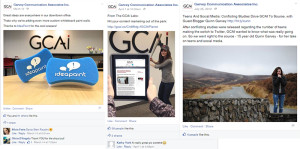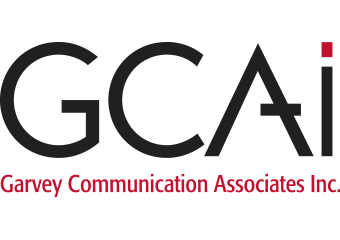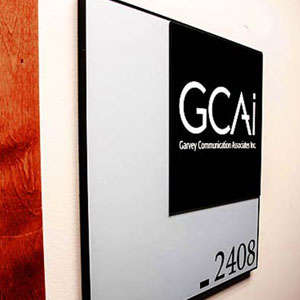GCAi Desk: Picture This – 5 Steps To Improve Your Visual Content Marketing

Is your content marketing campaign failing to generate positive results and engagement? It’s possible your quality content is struggling to attract clicks and views because it isn’t being accompanied by an appropriate visual. Visuals are becoming increasingly important in content marketing campaigns, to the point that a good visual is arguably more important than the actual content itself. How can this be? The new lifestyle of constant information access has led to decreasing attention spans. Social media users aren’t reading posts on their news feed anymore. The battle you’re fighting is to get them to stop scrolling, or swiping, and give your content a look. HubSpot generated a helpful infographic, one of the most effective visual tools, that shows content with a relevant visual gets 94% more views. Yes, view count almost doubles if the visual is executed properly and more views can lead to more clicks.
1. Know Your Audience
Now you’re probably wondering how to create a relevant, compelling visual that will double the effectiveness of your post. If it was easy, everyone would be doing it. The process starts similarly to the process of content marketing – with your audience.
“The most important factor for creating effective visual content requires an intricate knowledge of your audience,” GCAi Social Media Analyst James Garvey states. “What is relevant to them? Informative? Useful? If it doesn’t fit these criteria, it won’t be very effective.”
2. Don’t Rely on What’s in Stock
Don’t be completely reliant on stock photography. Yes, it’s convenient and takes minimal time to find an image, purchase it, and upload it. However, when it comes to compelling visuals, stock is at the bottom of the list. An organic image provides a more authentic feel and gives you opportunities to showcase your office space, employees, and connect with the audience. Hire a photographer to take some photos of a meeting or office activity, encourage employees to take their own photos during the day, and also encourage your audience to generate their own images with an incentive or contest to have the best one used in your campaign. User generated content enhances the credibility of your brand and raises the level of consumer engagement, which in turn makes your visuals more effective.
If you have to use stock photography, avoid the images that look obviously staged or fake. Keep in mind you don’t always have to use a picture of a smiling person or family. Find images that utilize objects core to your brand, such as a nice picture of a laptop or cell phone for a digital marketing agency.
If stock and organic images aren’t your cup of tea, have no fear – there are plenty of other visuals you can use instead. Videos, infographics, screenshots, presentations, and memes all can be at least equally effective as a photo, if not more so. The danger with creating these visuals is that it’s easy to overload the image with information, graphics, and colors and lose a possible consumer. You don’t need to tell your brand story with one infographic – just get their attention. They can get more information by clicking on your content after.
3. Optimize for Social Media Platforms
Finally, you have your visual. It’s awesome, compelling and you’re sure the audience will love it. It’s time to go post it on all of the social media platforms you use and call it a day, right? Wrong. Businesses make this mistake too often. Different social media platforms have different specifications for images and displaying them. Make sure your visuals display properly for each platform. Social media platforms tend to be biased towards landscape images, but there are plenty of visuals getting posted that are vertical and get surrounded by ugly, grey space since they don’t “fill the box.” This undermines your attempt to appear knowledgeable and looks lazy to the consumer, so take the time and optimize your images on a platform by platform basis. It will be worth it in the end.
4. Shareability
Another variable to keep in mind when it comes to visual content is the audience’s ability to share your image. Sharing is essentially free advertising, as it gives your brand more reach and validity. People share content that is informative and makes them feel smart. They want to look good to their friends and followers so, as discussed above, knowing what makes your audience feel smart or what they will perceive as enhancing their own image will increase the likelihood of getting shares. Infographics are great visual tools because they share so well. They communicate useful information in an appealing way. Memes, presentations, and videos are also among the most shareable visuals.
5. SEO Practices
The last trick you can use to squeeze every unique view for your visual content is optimizing it for search engines. Name your file something informative because search engines use the file name as possible keywords during searches. Don’t leave the picture of an office meeting with the default name “DSC0403” – put your brand name in it. If it displays a product, include the product or service name. It makes a difference. Also, fill out the alt text for your images. Not only will it appear if your images don’t load, it can be seen when a consumer hovers the mouse pointer over the image. Alt text is another way search engines connect keywords to your images.
Visuals are the key that the audience will use to open the door to your content and website. It increases the chance of getting views, shares, and clicks. If you ever get stuck for ideas or inspiration, brands such as BMW and Pepsi do a great job with their visual content when it comes to utilizing fresh, unique images and authentic feeling. While it is an often overused cliché, the digital realm is one place where a picture is worth 1,000 words.




